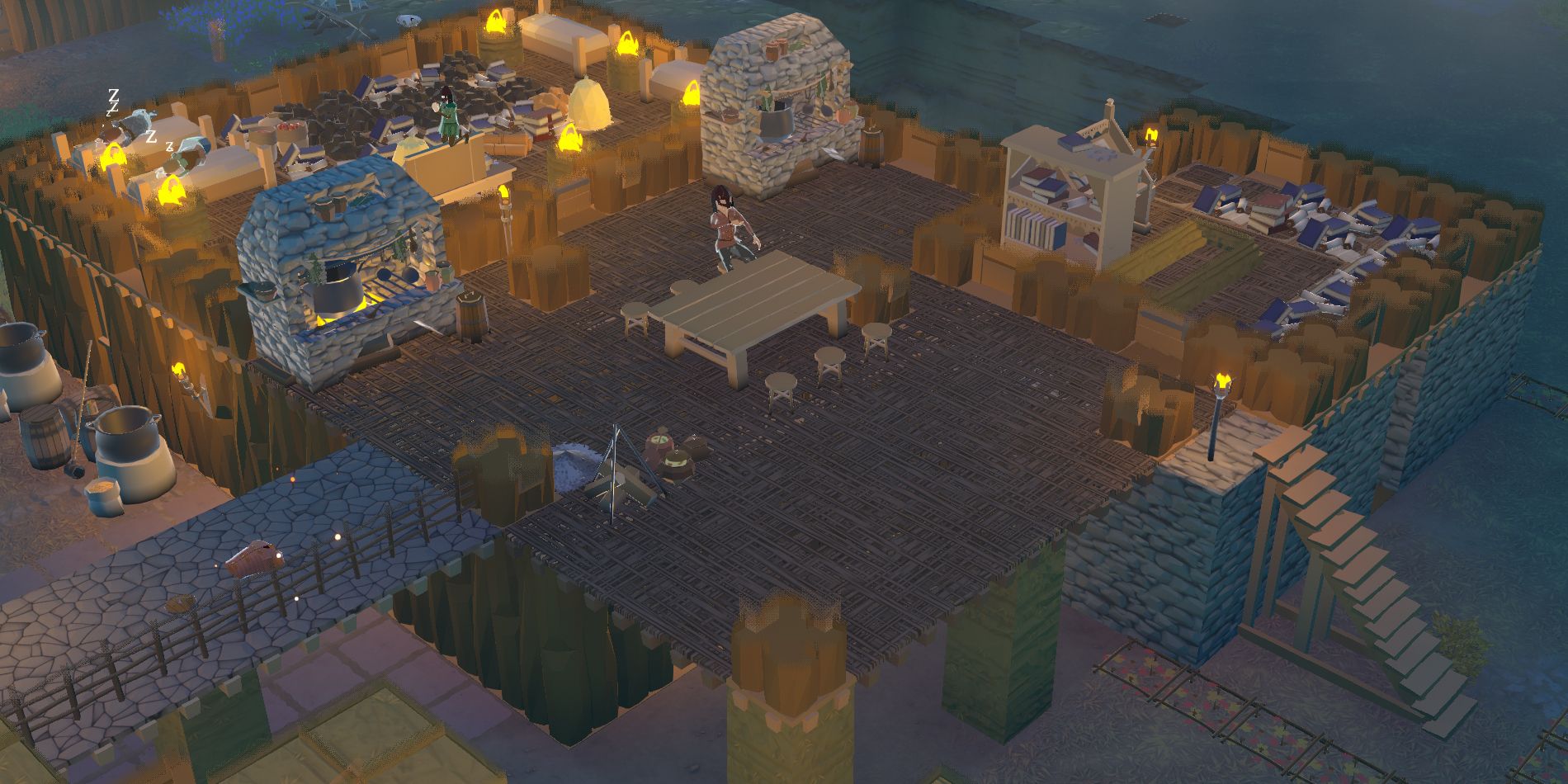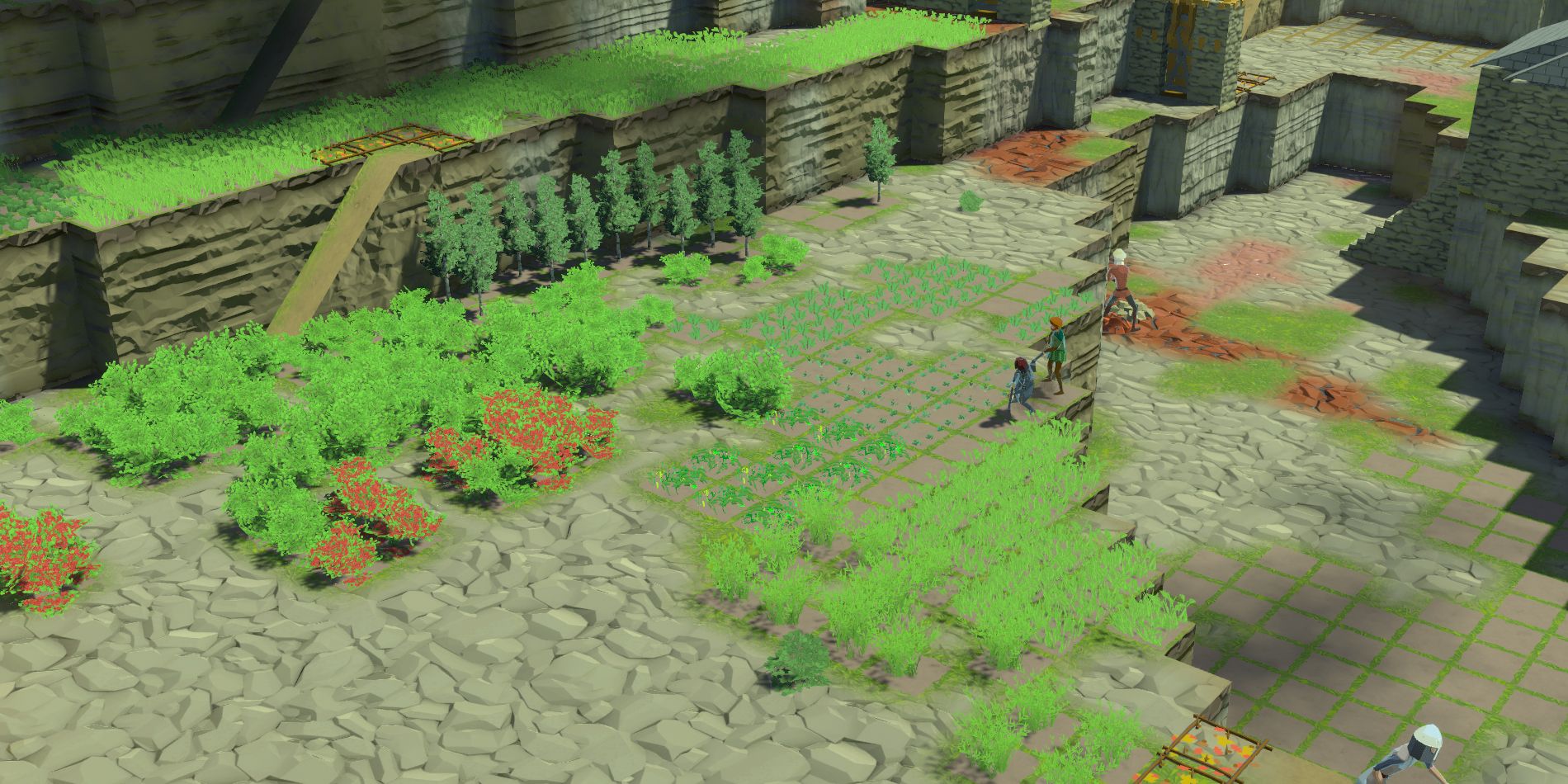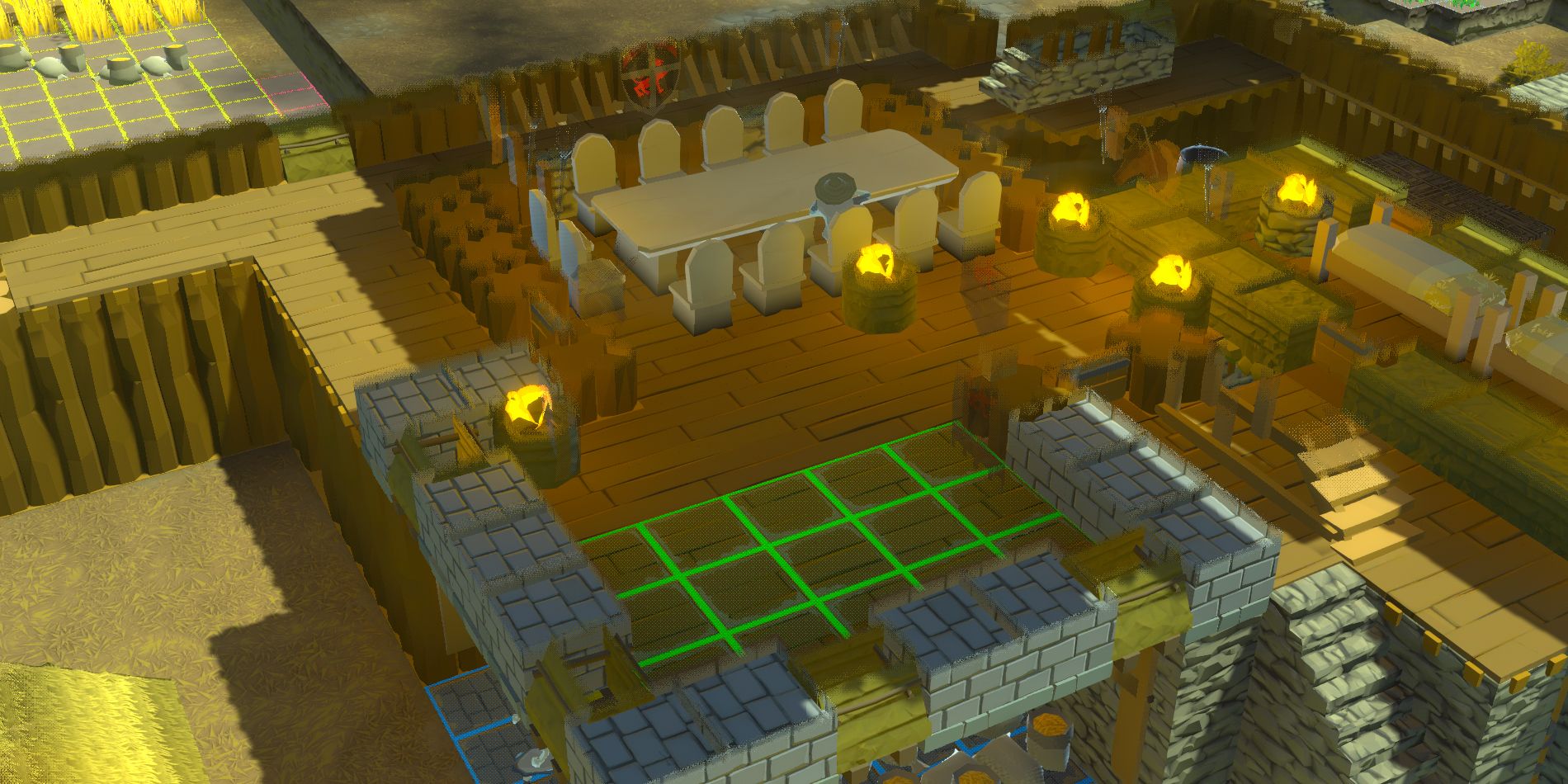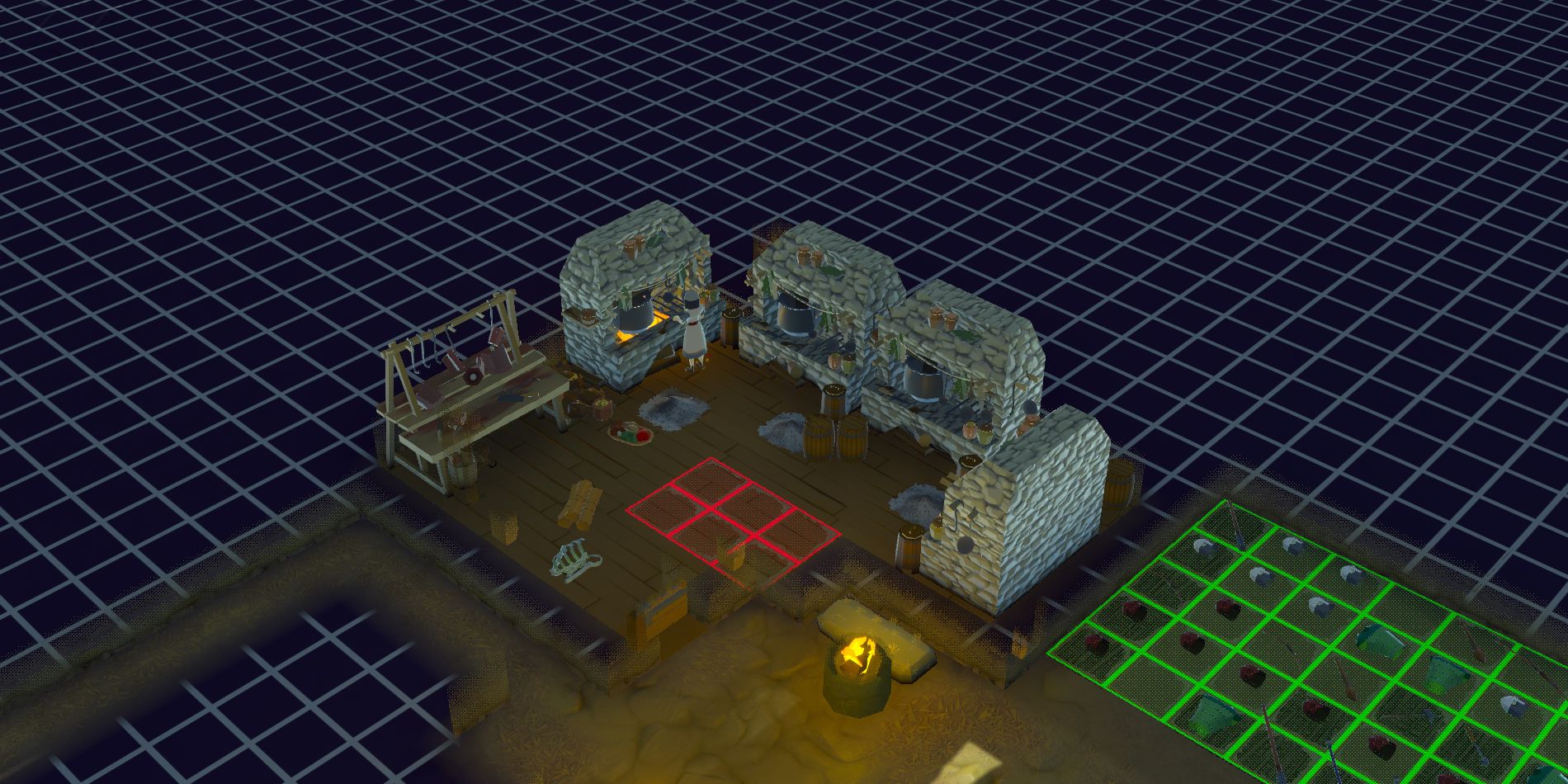Going Medieval has a lot of gameplay options while still being in its early access period. Players can make amazing buildings, build armies, and craft new wares. But with changing seasons and item decomposition, settlements will need to prepare for unexpected attacks, natural disasters, and surprise guests.
Settlers have basic needs including sleep, thirst, entertainment, and food. Feeding can be one of the hardest parts without proper planning. Without a well-mined-out basement, there is a chance food stock could rot. By gathering, growing, harvesting, and cooking with a schedule can keep characters alive through the worst winter storm.
Gaining Food in Going Medieval
There are several methods for gaining ingredients. Each of them may be required based on the map type, season, and difficulty settings. To make things a little bit easier, players may want to provide some starting food when selecting a new game.
Foraging
When starting off fresh, gathering food from the land may be the only option. Valley maps tend to be rife with wild mushrooms and redcurrants. While both can be used in cooking, the latter is even better left for making rough wine. Both of these foods are less bountiful in mountain maps, and will completely disappear during a snowy winter.
Farming
Once studying agriculture, settlers can start making farms. This requires fresh soil and good weather, making it important to start farming in spring and harvest before the colder portions of autumn. While soil is harder to find on mountains, there will typically be some near the ridges. Cabbages, carrots, and beets should all be planted at first as each one takes several weeks to fully grow. Beets will wind up being the most useful as they have a long shelf life of nearly a month. Herbs, redcurrants, and barley can also be consumed, but they are best for other items like ale and medicine.
Hunting
Settlers can also kill any rabbits, deer, or wolves that are roaming the land. By default, a bow is needed to safely hunt animals as a task. However, with drafting melee fighters can also slay animals - though it is possible to ruin the body if their melee skill is lacking. If a settler has a low animal handling score, the targets may fight back. This makes it a good idea for several hunters to team up and go after the same catch. Note that if all members of a species are killed, it will take much longer for them to repopulate. Instead, it is a great idea to keep some of them alive for the later seasons.
Once killed, animals can be butchered for both meat and leather. The bones can also be used to make deer head decorations, but are otherwise trash.
Cannibalism
In very desperate times, settlers can slaughter and devour enemy raiders or fallen allies. Under normal circumstances, this will unnerve the chef, but perks like cannibal will make the character actually enjoy butchering other people. Cooking stations do not automatically use human meat and will need to be adjusted to do so.
Dining Facilities in Going Medieval
Busy settlers can eat on the go, anywhere on the map. But to be the most efficient, players should consider rooms specifically for cooking and dining. While a settler will normally use these if they are afflicted with ravenous hunger or other issues they might gorge on whatever food they can find.
Kitchen
A full kitchen will have a production speed boost, making all cooking go faster. At minimum, the room will need one butchering table, one hearth stove of any material, and two shelves of cooking pots. If the room detection doesn’t trigger, make sure the room is enclosed with walls, a roof, and a door. Also, the room cannot have other stations including a brewery or even a campfire.
Great Hall
The Great Hall will give a nice mood boost when settlers eat at its table. The room needs to be rather large, with at least 50 floor tiles. The other requirement also includes a large or medium table; six chairs or stools; four torches; and a total of eight shields, deer heads, banners of large or medium size. While not a requirement, it may be a good idea to create a stockpile with meals so diners won’t have to run around.
While the Great Hall is useful, the sick and injured may not have the strength to go there daily. It is a good idea to have spare food and tables close to the bedrooms of weakened settlers.
Cooking in Going Medieval
While settlers can simply eat raw food and relieve some hunger, doing so results in a mood penalty. With cooking and managing meal selection settlers will be much happier and healthier.
Meals
Meals can be cooked on campfires or stoves. These can include stews or roasted meat, but both are filling with a 95 nutrition score. If a cook uses ingredients that have already turned rotten, dubious meals will spawn instead. These should only be eaten during desperate times as they can make settlers sick.
Lavish Meals
Once a stove is built, cooks can make even better meals. These require more ingredients, but have the highest nutritional value and improve mood. It is probably a good idea to have one lavish meal per settler.
Packaged Meals
Once getting further into the technology tree, settlers can prolong meals by wrapping them in linen or leather. It has less benefit than lavish meals, so packaged meals are best used when there is a surplus of cloth materials.
Preserved Food
Meat can be smoked in smokehouses, while vegetables can be pickled with some salt or vinegar in a hearth. This production step takes time, which means other meals cannot be made while waiting on the preservation. This can keep food edible for months or even years. However, the nutrition significantly drops to just 30 and is currently treated as raw food. Meal production can be adjusted to use preserved food like any other ingredient.
Going Medieval is currently in early access on PC.




